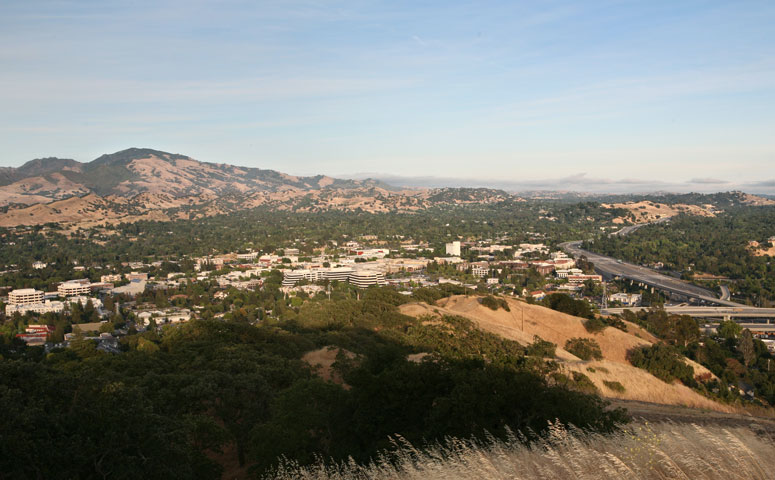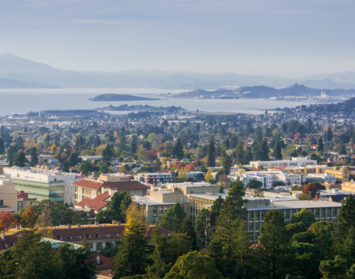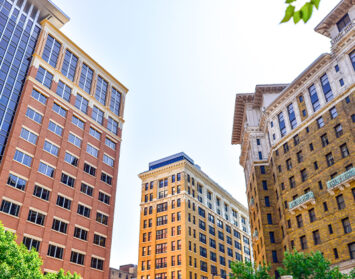As availability decreases and office rents hit all-time highs in San Francisco, companies are looking to the East Bay as the pressure release valve.
By Matt Geist
The Bay Area is showing no signs of slowing as large block requirements continue to compete for limited availability in the San Francisco markets. Fueled by continued ferocious IPO activity, the San Francisco “bucket” has begun to overflow into the Oakland and I-680 Corridor markets. Although demand continues to steadily increase in the East Bay, rents are still considered a discount in comparison to San Francisco and also provide employees with opportunities to work closer to where they live reducing commute times.
Spotlight: Oakland

- The debate on whether the tech industry sees the Oakland Market as a viable option is now over. In addition to Square leasing 350,000 square feet at Uptown Station late last year, Credit Karma announced its plans to occupy 110,000 square feet at 1100 Broadway which is currently under construction. There are several large tech users circling the Oakland CBD market with the recent delivery of 2150 Webster Street which can offer 244,000 square feet and the upcoming delivery of 601 City Center which can offer 300,000 square feet.
- Kaiser Permanente announced in June that it plans to break ground on the Kaiser Permanente Thrive Center–the second largest corporate campus in the Bay Area. Kaiser purchased the site at 2100 Telegraph Avenue from the City of Oakland and plans to develop 1.6 million square feet for a major consolidation out of approximately 1.5 million square feet occupied in the Oakland market currently. The new development will house approximately 7,000 East Bay employees and physicians. This announcement further solidifies the Oakland market as a viable option for large corporate users and will offer an abundance of space for large block requirements once Kaiser vacates their existing facilities.
- The vacancy rate for the Oakland office market ended the quarter at 10.4%, a slight increase year-over-year, which was driven in large part by new product being delivered. Gross absorption was strong for the second quarter at 597,455 square feet with the majority of the activity taking place in the CBD market.
- Capital markets activity for the quarter was led by Swift Real Estate Partners’ purchase of 1333 Broadway. Swift purchased the 240,000 square foot office building in the Oakland CBD City Center for $482 per square foot.
Spotlight: I-680 Corridor

- Activity along the I-680 corridor remained strong with the north end of the corridor seeing the most gain during the second quarter of the year. The vacancy rate for the North I-680 ended the quarter at 16.1% which was a slight decrease from the first quarter. Demand remains very strong in the North I-680, Walnut Creek markets in particular, in large part to the convenient access to public transportation and abundant amenities.
- The Tri-Valley also saw a slight decrease in its vacancy rate to 12.2% down from 12.9% the previous quarter. Class A office was the strongest performing category during the second quarter of the year. Notable lease transactions in the Tri-Valley during the quarter were WeWork leasing 86,000 square feet in San Ramon and AEye leasing 47,000 square feet in Dublin.
- Due to a tremendous amount of capital markets activity in the Walnut Creek submarket over the past 36 months, coupled with solid demand coming from the San Francisco and Oakland markets, rents have steadily increased over the past several quarters. The most expensive buildings in the Downtown Walnut Creek submarket are achieving rents above $5.00 per rentable square foot per month, full service gross (FSG).
- Although leasing activity was strong during the second quarter in the Tri-Valley, several large blocks of space have been put on the market for sublease. Average asking rates closed the second quarter at $2.82 per square foot, per month, FSG which was a slight decrease from $2.85 per square foot, per month, FSG the previous quarter. With current large blocks available and more space rumored to be coming back to the market, it is anticipated that rents will level off or decrease slightly through the remainder of the year.
The East Bay commercial space market will continue to benefit from a strong regional economy that continues to thrive and grow. As San Francisco and the Silicon Valley continue to pump our growing companies that attract skilled labor, the East Bay will be a beneficiary of their search for expansion space or relocation of non-critical functions out of expensive real estate in the city to less expensive suburban markets and in closer proximity to where employees live.
Matt Geist is a vice president of Hughes Marino, a global corporate real estate advisory firm that exclusively represents tenants and buyersn. Contact Matt at 1-844-662-6635 or matt@hughesmarino.com to learn more.










